Blog & Latest Updates
Fly Fishing Articles
Insects by Common Name


Updates from May 29, 2007
Photos by Troutnut from Brodhead Creek in Pennsylvania
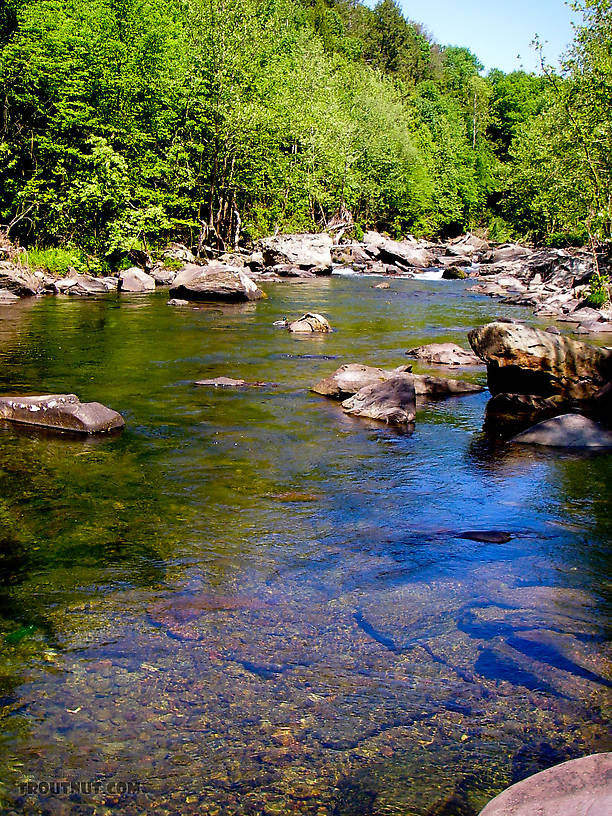
A few nice trout were rising in this deep pool during the tail end of a morning Drunella hatch, but I didn't manage to fool them.
StatePennsylvania
LocationBrodhead Creek
Date TakenMay 29, 2007
Date AddedJun 5, 2007
AuthorTroutnut
CameraPENTAX Optio WPi
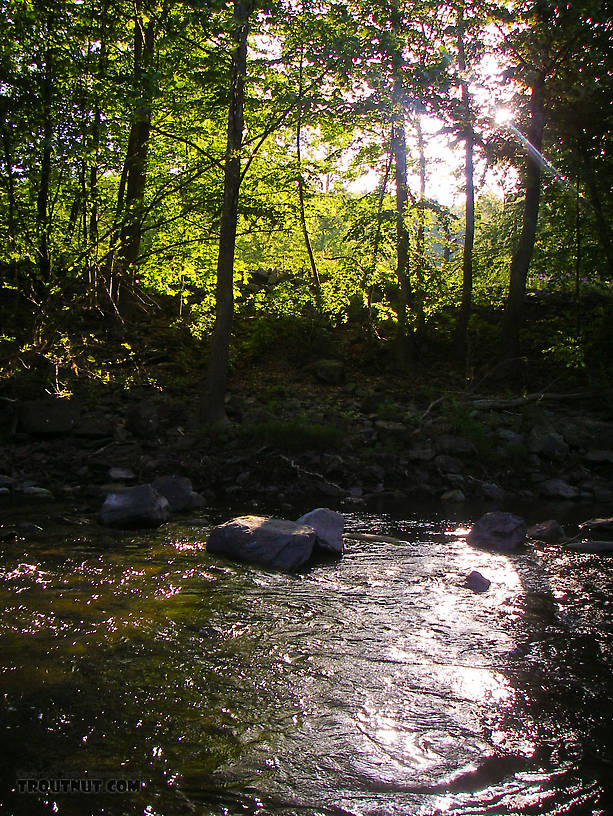
Early morning sunshine beats through the trees, heating the water up for a Drunella hatch.
StatePennsylvania
LocationBrodhead Creek
Date TakenMay 29, 2007
Date AddedJun 5, 2007
AuthorTroutnut
CameraPENTAX Optio WPi
Underwater photos by Troutnut from Brodhead Creek in Pennsylvania
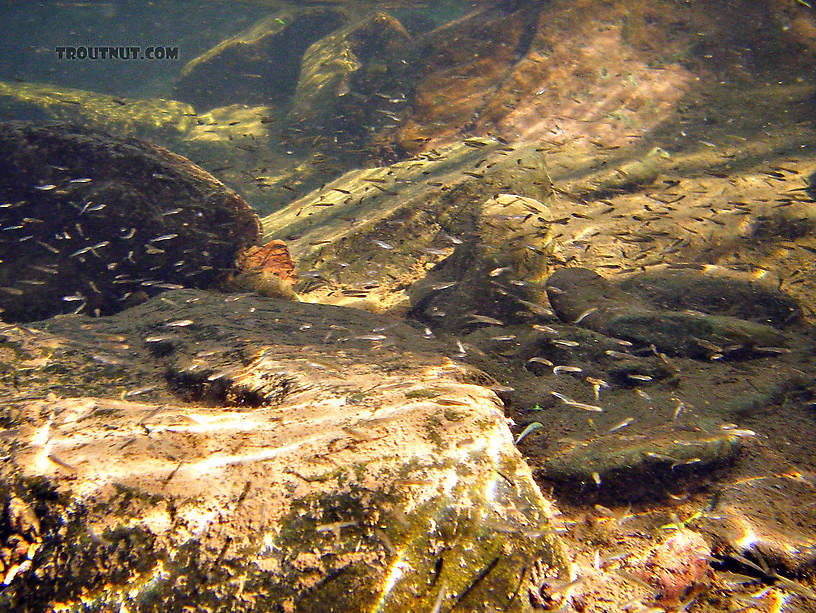
Late May finds many trout streams brimming with tiny minnow fry in large schools.
On-stream insect photos by Troutnut from Brodhead Creek in Pennsylvania
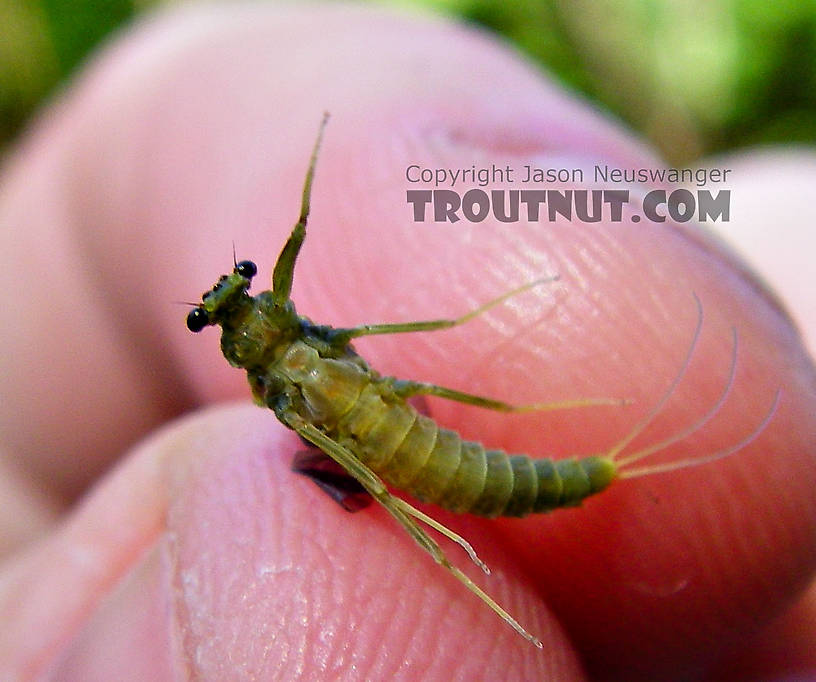
A freshly emerged female Drunella cornuta dun.
StatePennsylvania
LocationBrodhead Creek
Date TakenMay 29, 2007
Date AddedJun 5, 2007
AuthorTroutnut
CameraPENTAX Optio WPi
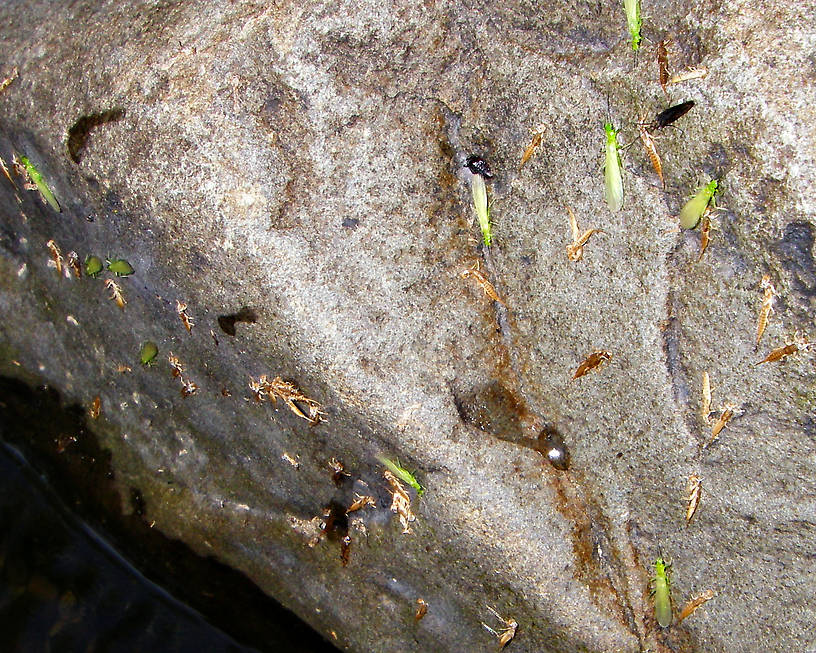
StatePennsylvania
LocationBrodhead Creek
Date TakenMay 29, 2007
Date AddedJun 5, 2007
AuthorTroutnut
CameraPENTAX Optio WPi
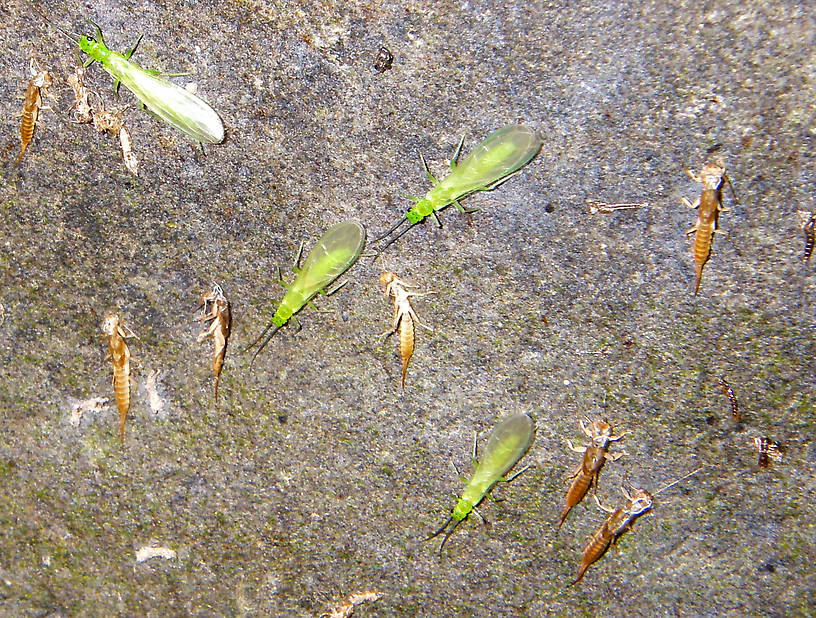
StatePennsylvania
LocationBrodhead Creek
Date TakenMay 29, 2007
Date AddedJun 5, 2007
AuthorTroutnut
CameraCanon EOS 20D
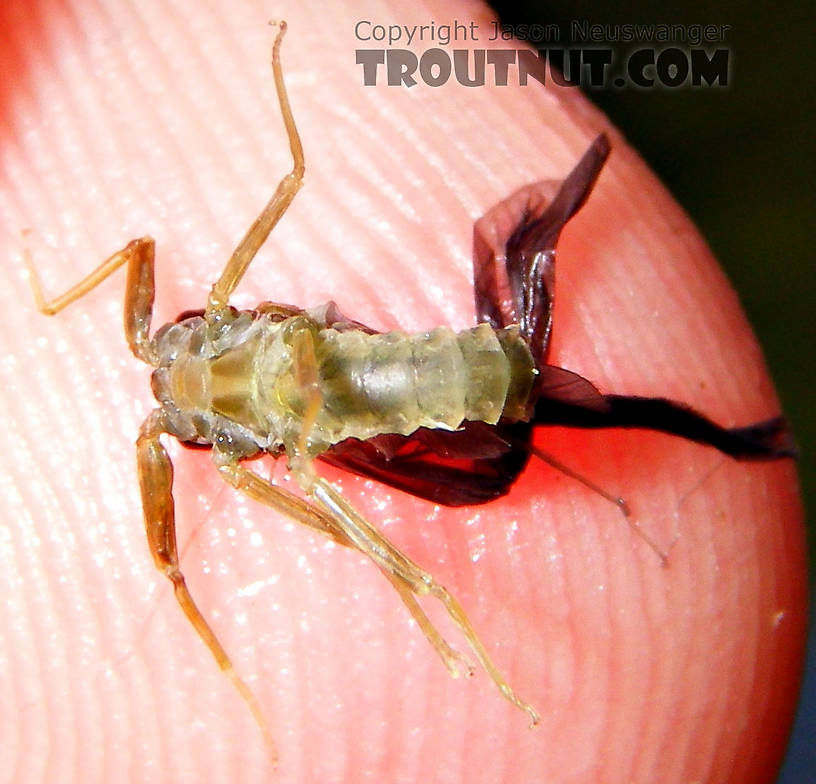
Here's the bottom of a freshly emerged male Drunella cornuta dun, showing a lighter shade of olive than the specimens I photographed with my better camera in the evening.
StatePennsylvania
LocationBrodhead Creek
Date TakenMay 29, 2007
Date AddedJun 5, 2007
AuthorTroutnut
CameraPENTAX Optio WPi
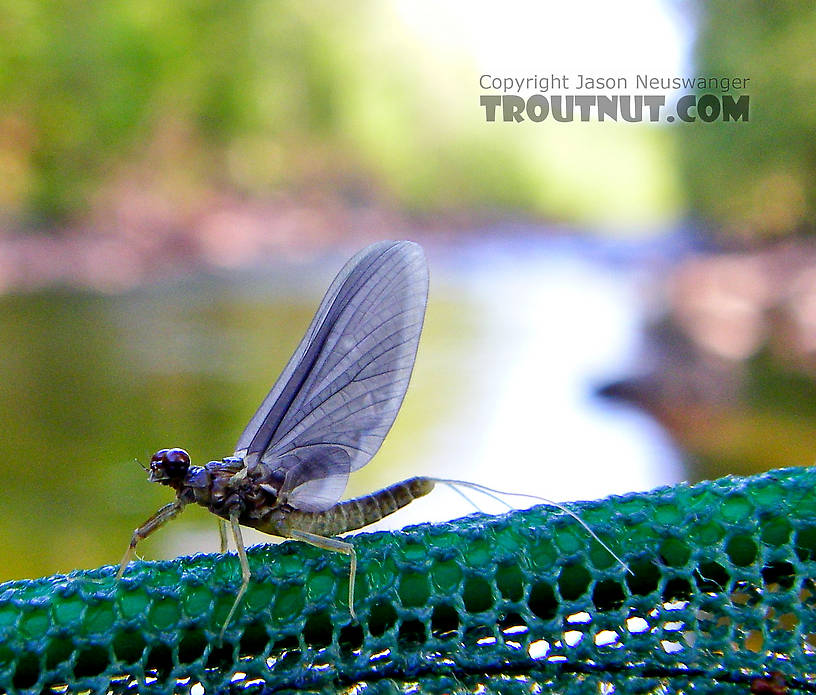
StatePennsylvania
LocationBrodhead Creek
Date TakenMay 29, 2007
Date AddedJun 5, 2007
AuthorTroutnut
CameraPENTAX Optio WPi
Closeup insects by Troutnut from Paradise Creek and Brodhead Creek in Pennsylvania
Corydalus (Dobsonflies) Hellgrammite Larva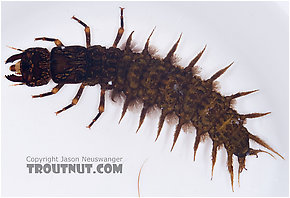 View 27 Pictures
View 27 Pictures
 View 27 Pictures
View 27 PicturesCollected May 29, 2007 from Paradise Creek in Pennsylvania
Added to Troutnut.com by Troutnut on June 4, 2007
Added to Troutnut.com by Troutnut on June 4, 2007
Tipulidae (Crane Flies) Crane Fly Adult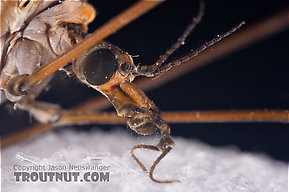 View 15 Pictures
View 15 Pictures
 View 15 Pictures
View 15 PicturesCollected May 29, 2007 from Brodhead Creek in Pennsylvania
Added to Troutnut.com by Troutnut on June 4, 2007
Added to Troutnut.com by Troutnut on June 4, 2007
Male Drunella cornuta (Large Blue-Winged Olive) Mayfly Dun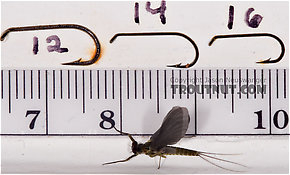 View 12 Pictures
View 12 Pictures
 View 12 Pictures
View 12 PicturesCollected May 29, 2007 from Brodhead Creek in Pennsylvania
Added to Troutnut.com by Troutnut on June 4, 2007
Added to Troutnut.com by Troutnut on June 4, 2007
Cinygmula subaequalis (Small Gordon Quill) Mayfly Nymph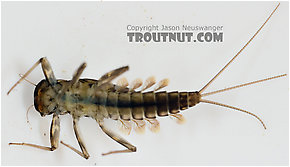 View 10 PicturesThis nymph is missing a few gills, but is otherwise in good shape. It was the only one of its species which turned up in my sample.
View 10 PicturesThis nymph is missing a few gills, but is otherwise in good shape. It was the only one of its species which turned up in my sample.
 View 10 PicturesThis nymph is missing a few gills, but is otherwise in good shape. It was the only one of its species which turned up in my sample.
View 10 PicturesThis nymph is missing a few gills, but is otherwise in good shape. It was the only one of its species which turned up in my sample.Collected May 29, 2007 from Paradise Creek in Pennsylvania
Added to Troutnut.com by Troutnut on June 4, 2007
Added to Troutnut.com by Troutnut on June 4, 2007
Male Nigronia serricornis (Fishfly) Hellgrammite Adult View 10 Pictures
View 10 Pictures
 View 10 Pictures
View 10 PicturesCollected May 29, 2007 from Brodhead Creek in Pennsylvania
Added to Troutnut.com by Troutnut on June 4, 2007
Added to Troutnut.com by Troutnut on June 4, 2007
Acroneuria abnormis (Golden Stone) Stonefly Nymph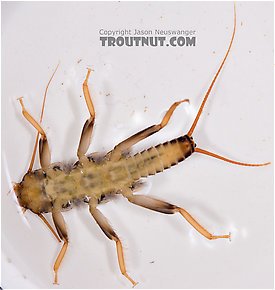 View 10 Pictures
View 10 Pictures
 View 10 Pictures
View 10 PicturesCollected May 29, 2007 from Paradise Creek in Pennsylvania
Added to Troutnut.com by Troutnut on June 4, 2007
Added to Troutnut.com by Troutnut on June 4, 2007
Maccaffertium ithaca (Light Cahill) Mayfly Nymph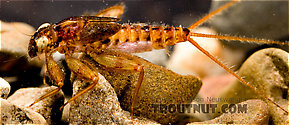 View 9 PicturesThis specimen seems to be of the same species as a dun I photographed which emerged from another nymph in the same sample.
View 9 PicturesThis specimen seems to be of the same species as a dun I photographed which emerged from another nymph in the same sample.
 View 9 PicturesThis specimen seems to be of the same species as a dun I photographed which emerged from another nymph in the same sample.
View 9 PicturesThis specimen seems to be of the same species as a dun I photographed which emerged from another nymph in the same sample.Collected May 29, 2007 from Paradise Creek in Pennsylvania
Added to Troutnut.com by Troutnut on June 4, 2007
Added to Troutnut.com by Troutnut on June 4, 2007
Paragnetina immarginata (Beautiful Stonefly) Stonefly Adult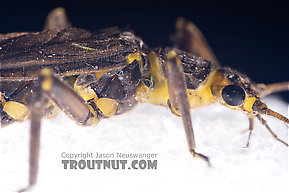 View 9 Pictures
View 9 Pictures
 View 9 Pictures
View 9 PicturesCollected May 29, 2007 from Brodhead Creek in Pennsylvania
Added to Troutnut.com by Troutnut on June 4, 2007
Added to Troutnut.com by Troutnut on June 4, 2007
Maccaffertium ithaca (Light Cahill) Mayfly Dun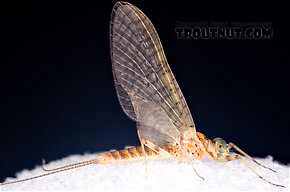 View 9 PicturesThis dun emerged from a nymph in one of the bowls on my table while I was sorting. I photographed it with the nymphal shuck (
View 9 PicturesThis dun emerged from a nymph in one of the bowls on my table while I was sorting. I photographed it with the nymphal shuck (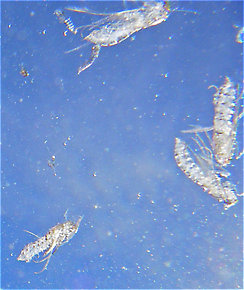 Shuck: The shed exoskeleton left over when an insect molts into its next stage or instar. Most often it describes the last nymphal or pupal skin exited during emergence into a winged adult.), and it seems to be of the same species as a nymph I photographed from the same sample.
Shuck: The shed exoskeleton left over when an insect molts into its next stage or instar. Most often it describes the last nymphal or pupal skin exited during emergence into a winged adult.), and it seems to be of the same species as a nymph I photographed from the same sample.
 View 9 PicturesThis dun emerged from a nymph in one of the bowls on my table while I was sorting. I photographed it with the nymphal shuck (
View 9 PicturesThis dun emerged from a nymph in one of the bowls on my table while I was sorting. I photographed it with the nymphal shuck (
Here's an underwater view of the pupal shucks of several already-emerged Brachycentrus numerosus caddisflies.
Collected May 29, 2007 from Paradise Creek in Pennsylvania
Added to Troutnut.com by Troutnut on June 4, 2007
Added to Troutnut.com by Troutnut on June 4, 2007
Ephemerella dorothea dorothea (Pale Evening Dun) Mayfly Nymph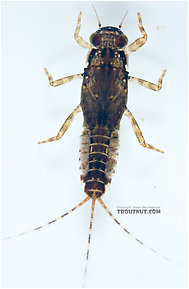 View 6 PicturesI keyed this nymph carefully under a microscope to check that it's Ephemerella dorothea.
View 6 PicturesI keyed this nymph carefully under a microscope to check that it's Ephemerella dorothea.
 View 6 PicturesI keyed this nymph carefully under a microscope to check that it's Ephemerella dorothea.
View 6 PicturesI keyed this nymph carefully under a microscope to check that it's Ephemerella dorothea.Collected May 29, 2007 from Paradise Creek in Pennsylvania
Added to Troutnut.com by Troutnut on June 4, 2007
Added to Troutnut.com by Troutnut on June 4, 2007
Alloperla (Sallflies) Stonefly Adult View 6 PicturesThis specimen was completely green when I collected it from among many others gathered on a midstream rock along with their nymphal shucks (
View 6 PicturesThis specimen was completely green when I collected it from among many others gathered on a midstream rock along with their nymphal shucks ( Shuck: The shed exoskeleton left over when an insect molts into its next stage or instar. Most often it describes the last nymphal or pupal skin exited during emergence into a winged adult.) early in the morning. There was also a yellow one with them, which I assumed was a different species. Now that I've seen how this one started changing from green to yellow, I have to wonder if they weren't the same species and the yellow one was just older.
Shuck: The shed exoskeleton left over when an insect molts into its next stage or instar. Most often it describes the last nymphal or pupal skin exited during emergence into a winged adult.) early in the morning. There was also a yellow one with them, which I assumed was a different species. Now that I've seen how this one started changing from green to yellow, I have to wonder if they weren't the same species and the yellow one was just older.
 View 6 PicturesThis specimen was completely green when I collected it from among many others gathered on a midstream rock along with their nymphal shucks (
View 6 PicturesThis specimen was completely green when I collected it from among many others gathered on a midstream rock along with their nymphal shucks (
Here's an underwater view of the pupal shucks of several already-emerged Brachycentrus numerosus caddisflies.
Collected May 29, 2007 from Brodhead Creek in Pennsylvania
Added to Troutnut.com by Troutnut on June 4, 2007
Added to Troutnut.com by Troutnut on June 4, 2007
Female Dolophilodes distinctus (Tiny Black Gold Speckled-Winged Caddis) Caddisfly Adult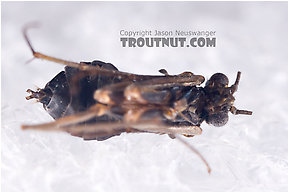 View 6 PicturesThis is a really strange specimen. I would guess it's one of the dry caddis pupa that scoots across the surface of the water as a pupa rather than emerging right away. Its "wing pads (
View 6 PicturesThis is a really strange specimen. I would guess it's one of the dry caddis pupa that scoots across the surface of the water as a pupa rather than emerging right away. Its "wing pads (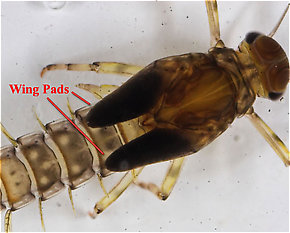 Wing pad: A protrusion from the thorax of an insect nymph which holds the developing wings. Black wing pads usually indicate that the nymph is nearly ready to emerge into an adult.)" sure don't look right, though. Maybe they're deformed and that's why I was able to find this one as a pupa in the first place. It also looks like it might be a caddis adult missing its wings, but since I found three of them, that kind of rules out such an anomalous maiming.
Wing pad: A protrusion from the thorax of an insect nymph which holds the developing wings. Black wing pads usually indicate that the nymph is nearly ready to emerge into an adult.)" sure don't look right, though. Maybe they're deformed and that's why I was able to find this one as a pupa in the first place. It also looks like it might be a caddis adult missing its wings, but since I found three of them, that kind of rules out such an anomalous maiming.
I found this one and one other on a midstream rock. The previous day, I caught a similar creature kicking around on the water's surface.
This one died and shriveled a little bit before I could photograph it, but it's basically in its original shape.
 View 6 PicturesThis is a really strange specimen. I would guess it's one of the dry caddis pupa that scoots across the surface of the water as a pupa rather than emerging right away. Its "wing pads (
View 6 PicturesThis is a really strange specimen. I would guess it's one of the dry caddis pupa that scoots across the surface of the water as a pupa rather than emerging right away. Its "wing pads (
The wing pads on this final instar Baetidae mayfly nymph are extremely dark.
I found this one and one other on a midstream rock. The previous day, I caught a similar creature kicking around on the water's surface.
This one died and shriveled a little bit before I could photograph it, but it's basically in its original shape.
Collected May 29, 2007 from Brodhead Creek in Pennsylvania
Added to Troutnut.com by Troutnut on June 4, 2007
Added to Troutnut.com by Troutnut on June 4, 2007
Geometridae (Inchworms) Moth Larva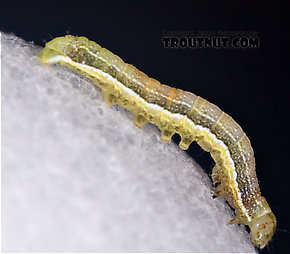 View 6 PicturesI caught this inchworm lowering itself to the surface of a trout stream from its silk thread. I saw a couple others floating on the surface, so it's likely the trout were familiar with them.
View 6 PicturesI caught this inchworm lowering itself to the surface of a trout stream from its silk thread. I saw a couple others floating on the surface, so it's likely the trout were familiar with them.
 View 6 PicturesI caught this inchworm lowering itself to the surface of a trout stream from its silk thread. I saw a couple others floating on the surface, so it's likely the trout were familiar with them.
View 6 PicturesI caught this inchworm lowering itself to the surface of a trout stream from its silk thread. I saw a couple others floating on the surface, so it's likely the trout were familiar with them.Collected May 29, 2007 from Brodhead Creek in Pennsylvania
Added to Troutnut.com by Troutnut on June 4, 2007
Added to Troutnut.com by Troutnut on June 4, 2007
Male Baetidae (Blue-Winged Olives) Mayfly Dun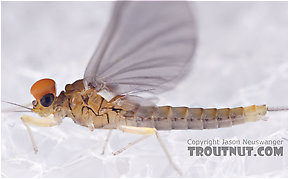 View 7 Pictures
View 7 Pictures
 View 7 Pictures
View 7 PicturesCollected May 29, 2007 from Brodhead Creek in Pennsylvania
Added to Troutnut.com by Troutnut on June 4, 2007
Added to Troutnut.com by Troutnut on June 4, 2007
Drunella cornuta (Large Blue-Winged Olive) Mayfly Nymph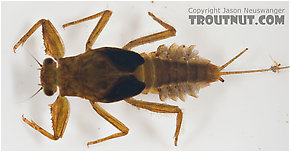 View 4 Pictures
View 4 Pictures
 View 4 Pictures
View 4 PicturesCollected May 29, 2007 from Paradise Creek in Pennsylvania
Added to Troutnut.com by Troutnut on June 4, 2007
Added to Troutnut.com by Troutnut on June 4, 2007
Male Baetidae (Blue-Winged Olives) Mayfly Nymph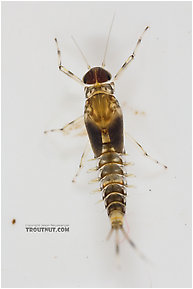 View 5 Pictures
View 5 Pictures
 View 5 Pictures
View 5 PicturesCollected May 29, 2007 from Paradise Creek in Pennsylvania
Added to Troutnut.com by Troutnut on June 4, 2007
Added to Troutnut.com by Troutnut on June 4, 2007
Female Baetidae (Blue-Winged Olives) Mayfly Dun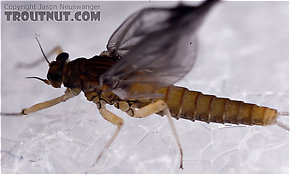 View 4 Pictures
View 4 Pictures
 View 4 Pictures
View 4 PicturesCollected May 29, 2007 from Paradise Creek in Pennsylvania
Added to Troutnut.com by Troutnut on June 4, 2007
Added to Troutnut.com by Troutnut on June 4, 2007
Female Drunella cornuta (Large Blue-Winged Olive) Mayfly Dun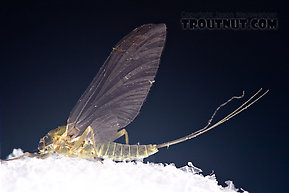 View 4 Pictures
View 4 Pictures
 View 4 Pictures
View 4 PicturesCollected May 29, 2007 from Brodhead Creek in Pennsylvania
Added to Troutnut.com by Troutnut on June 4, 2007
Added to Troutnut.com by Troutnut on June 4, 2007
Most recent comments on this post (latest on top)
Comment on this post
Top 10 Fly Hatches
Top Gift Shop Designs
Eat mayflies.
Top Insect Specimens
Miscellaneous Sites
Troutnut.com is copyright © 2004-2024 Jason
Neuswanger (email Jason). See my FAQ for information about use of my images.
 privacy policy
privacy policy
